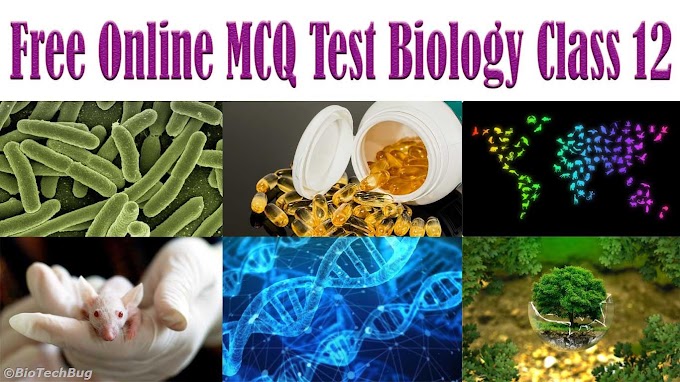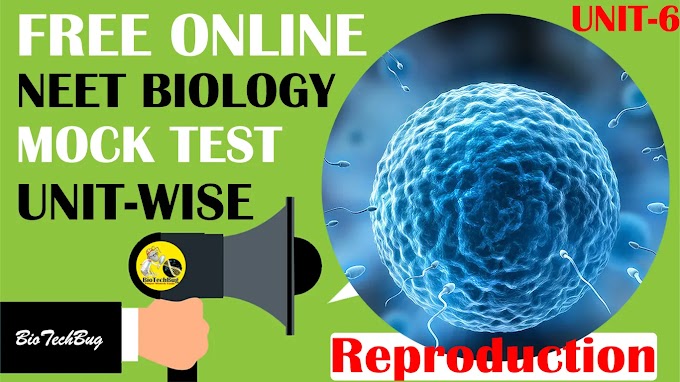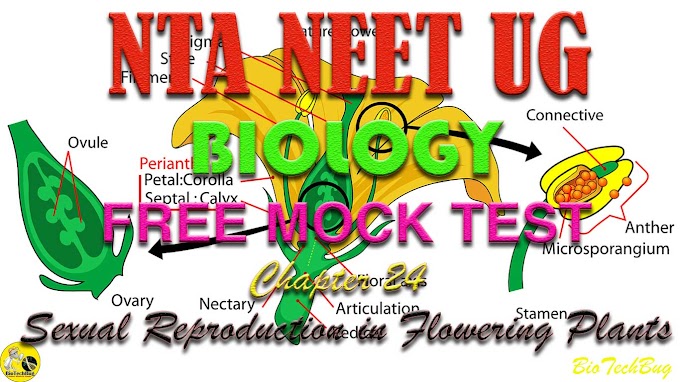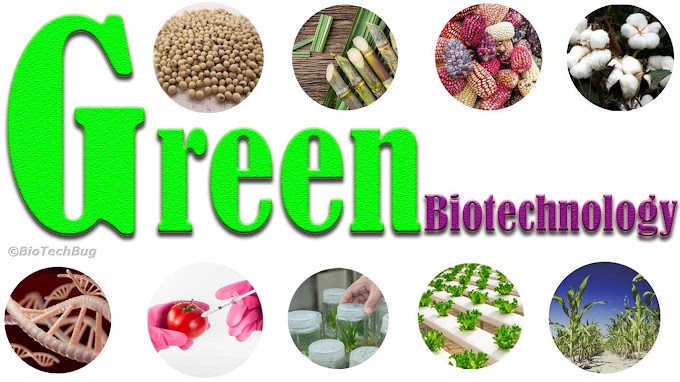Grey Biotechnology is dedicated
to the conservation and restoration of the environment. In other words, we can
say, Grey biotechnology is related to all those applications that are directly
related to environmental problem-solving. It includes bioremediation processes,
biodiversity maintenance, contaminants removal, avoiding overexploitation of
fauna and flora, and reduction of pollution of the ecosystem.
It is mainly dedicated to
environmental applications, the maintenance of biodiversity of flora and fauna, and
the removal of pollutants using various biotechnological approaches. To
maintenance in Biodiversity, molecular biology to genetic analysis methods are
applied for comparison, classification, and cloning of plants or animal
populations and species.
Environmental Biotechnology is
the main branch of Biotechnology that comes under the Grey Biotechnology field.
It deals with cleaning up contaminated and wastes from the environment by
industrial effluent treatment, sewage treatment, waste management, etc.
Branches of Grey Biotechnology
There are lots of applications of
Grey Biotechnology related to environment conservation, preservation, and
protection but it can be divided into two major branches further on the basis of
its role in the conservation of the environment.
- Maintenance of Biodiversity
- Removal of contaminants
Need of Grey Biotechnology
The need for Grey Biotechnology
arises due to environmental pollution that is caused by human activities like
urbanization, mining, industrialization, and overexploitation of flora and
fauna resources. To minimize the impact of man's activities on the environment
it protects the environment.
Every year's tons of waste
products produced by various industries like chemicals, pharmaceuticals,
agriculture, food, plastic, etc. cause various harmful impacts on
organisms. These waste products cause pollution in the air, water, and land. If
we properly manage these waste products we can reduce environmental pollution
and save endangered organisms who are unable to survive due to pollutions.
Currently, we are facing three main types of pollution.
- Air Pollution
- Water Pollution
- Soil Pollution
All these types of pollution, threaten the environment. So will also be harmful to humans, plants, animals, and all living organisms. Grey biotechnology plays a vital role in the elimination of air, water, and land pollutants or contaminants using various microorganisms, plants, and other biotechnological techniques. Biodiversity of flora and fauna is our natural resource that needs to protect. It protects those organisms who fall in the endangered category.
Goals of Grey Biotechnology
The goals of Grey Biotechnology
are to protect plants, animals, and the entire nature from the pollution caused
by humans. It includes bioremediation, maintenance of biodiversity, and the
restoration of contaminated natural environments.
The major goals of Grey
Biotechnology are under the following heads.
- Maintain and conservation of biodiversity
- Removal of contaminants from the environment
- Reduction of over-exploitation of flora and fauna
- Balancing between environment and human activities
Grey Biotechnology Applications
Grey biotechnology is related to all
those applications that are directly related to environmental restoration and
preservation. Due to lots of advancements in Biotechnological techniques, it now
helping various industries to produce environmentally friendly products that
are much safer, less polluting, less greenhouse gas emitting and very helpful
for the environment and living organisms. Applications of Grey Biotechnology
fall under the following heads.
1. Bioremediation
Bioremediation is the application
of microorganisms for removal or converting less harmful to the toxic
pollutants in the soil or land. It is a biological method in which microbes are
used for the transformation or degradation of contaminants to less toxic forms.
Microorganisms are capable of
utilizing various types of carbon sources and degrading a variety of typical
contaminants found in soil. The main advantage of bioremediation is its
ability to destroy a wide range of organic compounds.
Bioremediation by different
microorganisms like bacteria, fungi, etc., needs the appropriate environment for the
clean-up of the polluted site. Leather, textile, pulp, and paper industry
deposits harsh chemicals to Land or soil have that can be reduced or completely
eliminated by Bioremediation applications.
2. Plastic degradation
Petroleum-based plastics such as
polyethylene (PE), polyethylene terephthalate (PET), polystyrene (PS),
polypropylene (PP), polyvinylchloride (PVC), and polyurethane (PUR) are the
main polluting agent on the Earth that do not degrade easily.
Identification and applications
of natural microorganisms that can degrade these plastic products to clean the
Environment. Development of mutant microorganisms that can decompose these
waste materials. Recombinant microbial enzymes are also a promising way to degrade
plastic wastes. So, microorganisms and microbial enzymes are the main tools of
the bioremediation of waste.
3. Biodiversity Maintenance
Biodiversity is the richness of
the quantity and quality of the spices varieties of flora and fauna in a
particular region. To maintain Biodiversity, recording and updating all
available species, their gene banks data, genetic analysis to track, and
cloning of endangered species to preserve them.
Our environment has lots of
variety of plants and animals that create an ecosystem and are connected to each
other at various levels by the food chain. The variety of this flora and fauna makes good biodiversity in the environment.
Due to deforestation,
industrialization, and pollutions, lots of plants and animals fall under the
endangered category and it is very harmful to good biodiversity. Pollutants
either on land or in water bodies (river, sea) cause a major impact on the
terrestrial and aquatic animals and plants.
4. Sewage Treatment
After urbanization, there is a need
to develop a system for human waste management. Flowing the sewages in
rivers causes harmful effects on the environment and aquatic organisms. By
applying biotechnological techniques large-scale microorganisms are used for the
treatment of sewage to the production of biogas and sludge that can be used as bio
manure.
5. Biological control agents
Application of chemical agents
like pesticides, fungicides, insecticides, etc. to protect the plant from
disease, insects, mites, and weeds cause harmful effects on the soil and the
main pollutant. So reducing these pollutants application of Biological control
or biocontrol agents are safe and environment friendly.
In this method, to control the
undesirable insects we increase artificially their natural enemies. The
biological control of insects, pests, and plant weeds relies on the existing
natural mechanisms like parasitism, predation, herbivores, etc.
Natural enemies of pests are
predators, parasitoids, pathogens, predatory vertebrates, protozoan parasites,
nematode parasites, and microbial pathogens.
Grey Biotechnology Examples
Some examples of Grey
Biotechnology are listed below.
- Use of Biomarkers to protect biodiversity.
- Use of new bioremediation agents to control oil spills on the sea.
- Creation of seed and gene banks to save the species extinct in nature.
- Application of Biosensors for identification of hydrocarbon contaminations.
- Development and maintenance of national parks and sanctuaries to conserve biodiversity.
- Use of marine bacteria to decontaminate the sediments that are contaminated with chlorinated pollutants.
Conclusion
Grey Biotechnology plays a vital
role to protect our Earth's environment from pollution and maintaining its
biodiversity. Protection and conservation of our environment do not save only the
others it also save us. We are part of the food chain and directly linked to
each other with plants and animals. If we are unable to save them then we have to
also face problems. Today Biotechnology has lots of techniques to conserve our
environment and biodiversity without overexploitation of the natural resources
and without polluting them.








